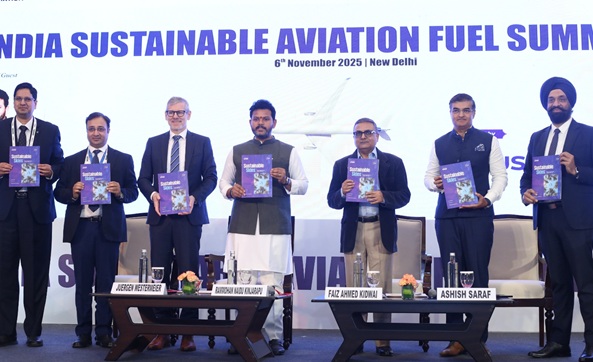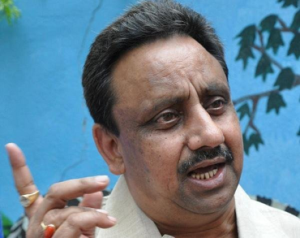India has the capacity to become the global leader in SAF production
NEW DELHI, 06 November 2025: Mr Ram Mohan Naidu Kinjarapu, Minister of Civil Aviation, Govt of India today said that the global aviation industry stands at crossroads between rapid growth along with the climate concerns. The sector continues to expand faster than the overall economy and most other transport segments, driven by globalization and growing passenger demand. With an annual growth rate of 6.7%, nearly 10 million passenger trips are expected in 2025. “Aviation has truly become the growth engine for mobility and businesses worldwide,” he added.
Addressing the ‘India Sustainable Aviation Fuel Summit’, organized by FICCI, jointly with the Ministry of Civil Aviation, Mr Kinjarapu said that the growing energy needs of the aviation sector demand greater clarity, commitment and collaboration from all stakeholders. “Our ATF consumption is projected to reach 15-16 million ton by 2030 and 30-31 million ton by 2040. The solution here for all of us is Sustainable Aviation Fuel (SAF). With the potential to reduce carbon dioxide emissions by up to 80 per cent compared to conventional jet fuels, SAF offers a direct way for all of us to reduce carbon footprint in aviation sector,” he stated.
Speaking on the potential of SAF, the Minister further stated that the government is in the process of drafting a ‘Sustainable Aviation Fuel Policy’. “The Ministry has been taking robust steps to speed-up the SAF movement and we are committed to soon releasing the SAF policy,” he emphasized.
Mr Kinjarapu also stated that as agricultural powerhouse with over 750 million ton of biomass, India has the capacity to become the global leader in SAF production. SAF will not only help in addressing the challenge of growth versus sustainability but will also benefit with its huge scale impact by reducing crude oil import bill by $ 5-7 billion every year along with creating 1 million green jobs across SAF value chain.
The Minister said that in the last 9 years, India has added 90 airports, addition of 400 aircrafts in the fleet along with increasing the scheduled flight movements by 78 per cent. “We plan to expand our airport network by 50 in the next 5 years and 200 in next 20-25 years along with a growth projection of 500 million annual passengers with growth rate of 10-12 per cent in coming 10 years,” he noted. With this growth, India’s aviation share in transport emissions is projected to rise from 5 per cent to 8-10 per cent by 2030, added Mr Kinjarapu.
Mr Faiz Ahmed Kidwai, DG, DGCA said that decarbonization of the aviation sector is a global endeavor. It requires shared responsibility, mutual respect and a spirit of solidarity and India is committed to being a constructive, proactive and principal partner in this journey. “Our ambition is to achieve 5 per cent SAF blending target 2030 which is not just a goal but a declaration of intent to lead by example,” he added.
Mr Jurgen Westermeier, Chairman, FICCI National Civil Aviation Committee and President & MD, Airbus India & South Asia said SAF is also a transformative opportunity for India. “For India, the relevance of SAF extends far beyond just environmental targets- it can be a powerful economic enabler. By developing a domestic SAF industry, India can immediately and effectively enhance its energy security and sovereignty over its fuel supply chain,” he added.
Mr Ashish Saraf, Co-Chairman, FICCI Civil Aviation Committee & Vice President and Country Head India, Pratt & Whitney said that India’s aviation journey is unstoppable. Sustainable Aviation Fuel (SAF) is the cornerstone of India’s Net Zero aviation story. SAF alone could be responsible for reducing emissions by up to two-thirds, making it uniquely positioned not only to help India cut down emissions but also to take a leading role globally and become an export hub, he added.
During the event, FICCI-KPMG Thought Leadership Report was released.



